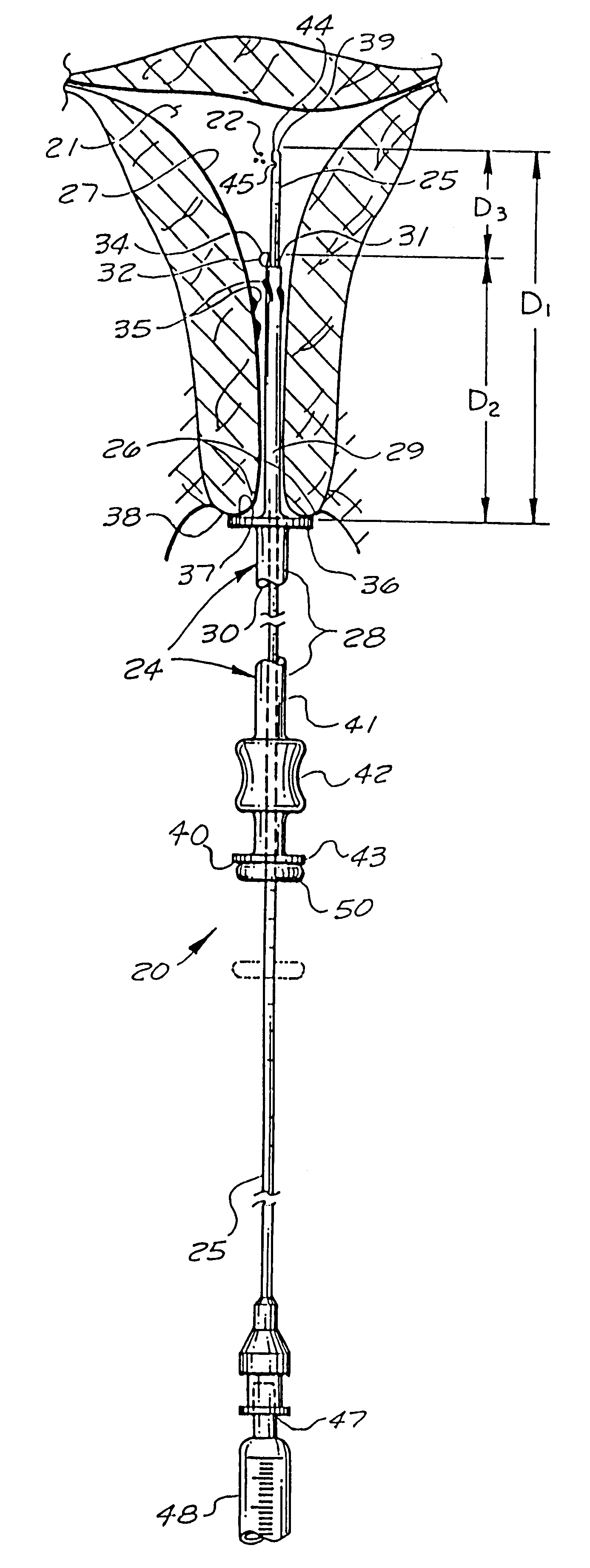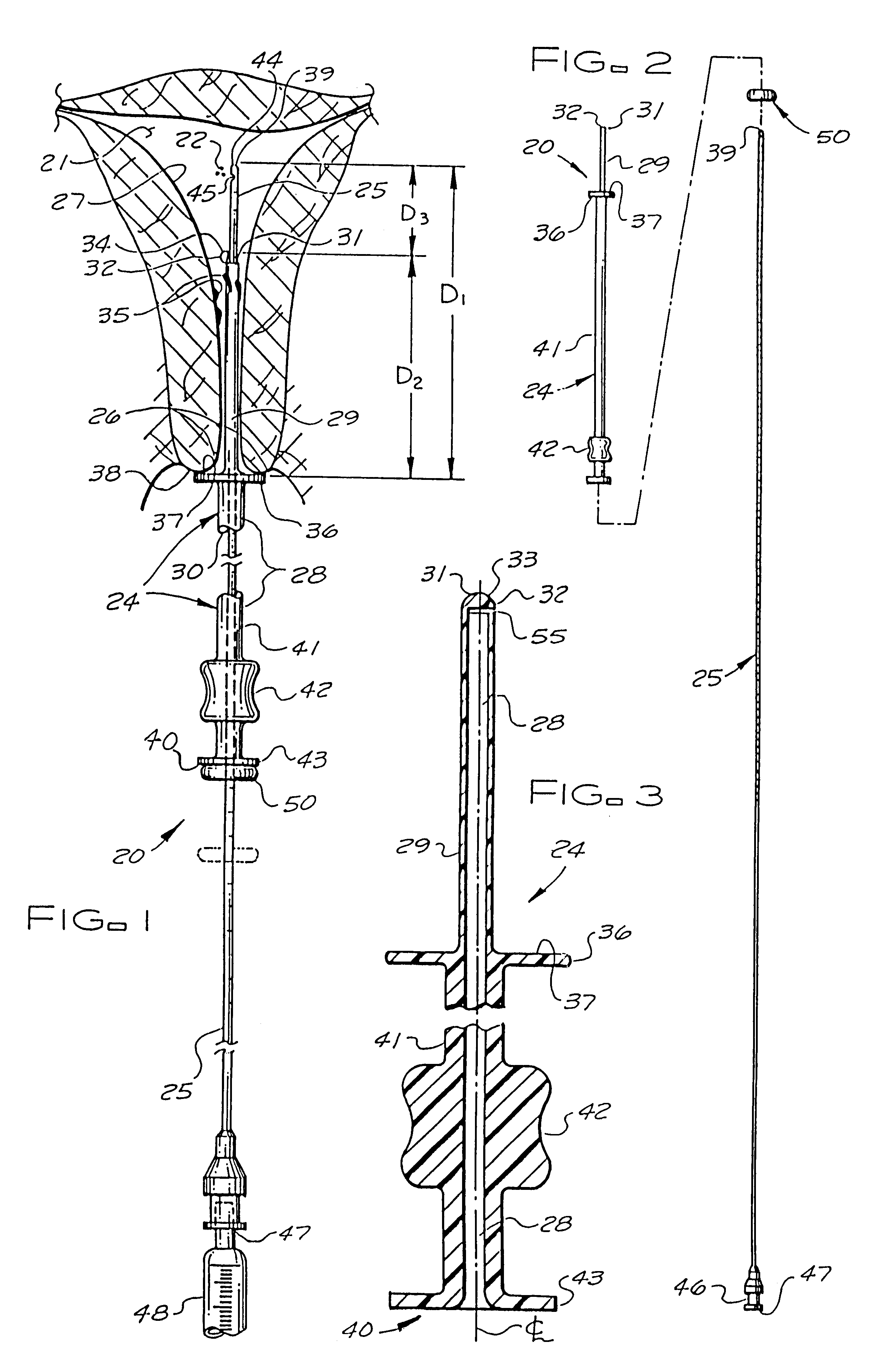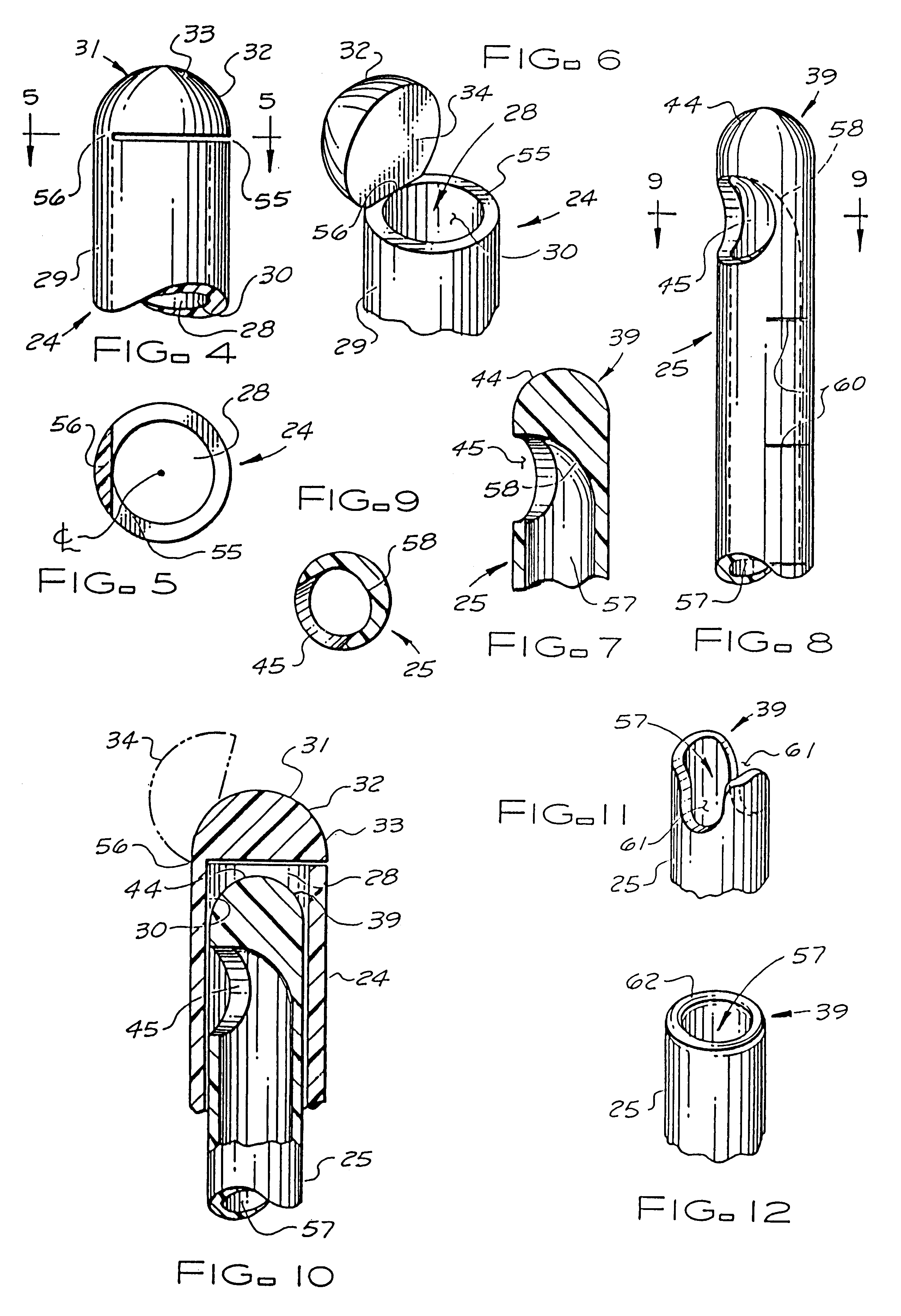Catheter system for implanting embryos
a catheter system and embryo technology, applied in the field of catheter systems for implanting embryos, can solve the problems of insufficient treatment, interference with the embryo, and difficulty in inserting the small catheter, and achieve the effect of avoiding injury to the uterus and increasing the stiffness of the catheter system
- Summary
- Abstract
- Description
- Claims
- Application Information
AI Technical Summary
Benefits of technology
Problems solved by technology
Method used
Image
Examples
Embodiment Construction
Shown in FIG.1 is a preferred embodiment of the catheter system 20 of the present invention, shown inserted into the uterus 21 of a woman for the purpose of depositing embryos 22. The catheter system 20 is comprised of catheter sleeve means embodied by catheter outer sleeve 24 and inner catheter means embodied by an inner catheter 25. The outer sleeve 24 contains and protects the inner catheter 25 (the two being concentrically disposed), and the embryos 22 within, while the catheter system 20 is inserted into the vagina, through the cervix 26, and into the uterus 21. Then there is performed embryo depositing and placement at a predetermined depth (from the exterior of the cervix) D1 within the uterus 21. Once deposited within the uterus 21, the embryos 22 will normally eventually attach to the uterus wall 27.
The outer sleeve 24 is substantially tubular, as shown, and has a longitudinal round-cylindrical hollow 28 (having interior surface 30) appropriately sized for loosely containin...
PUM
 Login to View More
Login to View More Abstract
Description
Claims
Application Information
 Login to View More
Login to View More - R&D
- Intellectual Property
- Life Sciences
- Materials
- Tech Scout
- Unparalleled Data Quality
- Higher Quality Content
- 60% Fewer Hallucinations
Browse by: Latest US Patents, China's latest patents, Technical Efficacy Thesaurus, Application Domain, Technology Topic, Popular Technical Reports.
© 2025 PatSnap. All rights reserved.Legal|Privacy policy|Modern Slavery Act Transparency Statement|Sitemap|About US| Contact US: help@patsnap.com



